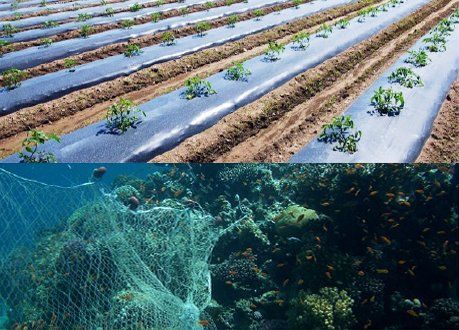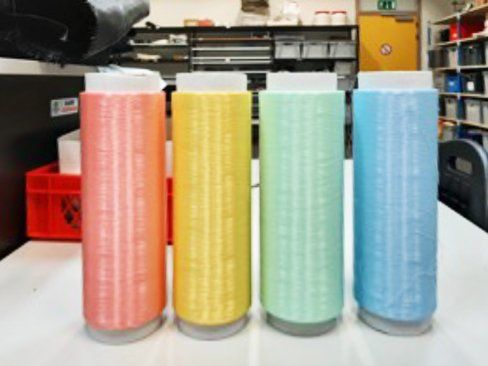
N ° 1 7 D E C E M B E R 2 0 2 2
December is already here, after a year full of results! Through our projects, we have continued to explore some areas of in-depth transformation of the textile-clothing sector, battered... and reawakened by two years of international turbulence: re-inventing applied research through new types of links between laboratories and industry in Tunisia and the Mediterranean (Wintex), stimulate the creation of textile works of art to visualize possible futures of sustainability (CreativeWear Plus), work on the emergence of local, circular textile loops based on biosourced waste ( Herewear) or implement an ecosystem demonstrating that the reduction of gender inequalities is the source of an alternative growth solution for the textile-clothing sector (shemakes). And to go beyond, we are collaborating in a new Erasmus project led by Turkish partners with the aim of raising awareness and training players in this sector in circular design (ShoeDes). This issue, deliberately shifted in time, gives me the opportunity, on behalf of the entire Cedecs-TCBL team, to wish you a happy holiday season before seeing you again in 2023.
Frédérique Thureau, Cedecs-TCBL
###Biosourced

Herewear community:
Biodegradable vs compostable?
During a meeting between Centexbel experts and members of the Herewear community, it was possible to discuss the differences between biodegradable and compostable fibers. Biodegradable fibers decompose in a favorable environment (heat, humidity) under the action of micro-organisms (bacteria, fungi, algae) and must achieve 90% biodegradation in less than 6 months. Compostable fibers are by definition biodegradable, but they must also be reusable as soil fertilizers. For a fabric to be biodegradable, it must be composed exclusively of biodegradable fibers, natural (such as cotton, linen, hemp, wool or silk) or artificial cellulose fibers (such as tencel). It is also important that its manufacturing process does not include petrochemical inputs (dyes and other finishes). Throughout the Herewear project, online sessions allow you to ask your questions to our experts on the biosourced, local and circular sector. Join our community (H2020 project n°101000632 | Centexbel photos)
###Local

Herewear x TCBL DAY in Arles:
Local biosourced models
The Camargue is a territory rich in land resources: bulls and sheep, salt and sand, vines, fruits and olives or rice and invasive plants. Their waste is largely underused and ends up in the dumpster instead of serving as secondary resources for a local and circular economy with high added value. During this day, around sixty participants, half of them online, shared their expertise upstream of the value chain. After a presentation of the territorial issues of the Camargue by the LUMA Workshop, then the current results on the upstream transformation of biosourced waste into pulp (TNO), pulp into threads (Centexbel and DITF) and thread into textiles via micro -processing factories (DITF), various workshops made it possible to work on five models of local and biosourced processing, and to create dynamics within the local Herewear community. This community brings together all external partners wishing to explore the biosourced segment as a sustainable alternative to the current textile sector. Join her (H2020 project n°101000632 | photo Centexbel)
###Inclusive

TCBL Day x shemakes:
Welcome differences
“Six hours of conference that go by so quickly that you never want it to end!” What a great compliment at the end of the final conference of the shemakes project on November 30, at the Waag Textile Lab in Amsterdam. In the great TCBL tradition, we started with the project challenges and inspiring points of view on gender issues in the textile sector, then showed that the implementation of an ecosystem to reduce gender inequalities is the source of an alternative growth solution for the textile-clothing sector, with potentially a long-term impact. Secondly, we gave the floor to our experts and our ambassadors who thus conveyed the breathtaking energy of this project. You can see or rewatch this conference on YouTube while waiting for the book which will transcribe the significant elements. And you? If you are interested in the dynamics of the education of girls and women, on engineering techniques applied to textiles, through collaborative and open-source methods, with expert referents and ambassadors, join the TCBL community
###Innovation
The brand of organic cotton t-shirts Loom embarks on the path of sober and pleasure production
At the origin of the brand, questions about the textile-clothing value chain: overproduction, strong social and environmental footprint, and waste. Everything that was invisible is becoming more and more visible.
###Innovation
The technology of Spinnova allows you to go from a solution of suspended cellulose fibers from wood pulp to a textile filament ready to be used in spinning by a high-pressure physical process.
###Innovation
Enzymes present in the saliva of butterfly larvae Galleria Mellonella attack polyethylene
(1/3 of the 400 million tonnes of plastics produced each year, petrosourced) in just a few hours, according to a first study by the Margarita Salas biological studies center (Madrid).
###Innovation
Reverse reuses the skin of the lionfish (or scorpionfish)
It is a colorful and venomous fish that colonizes and destroys marine biodiversity in all environments where it has developed. The skin structured in crossed fibers makes it possible to manufacture a resistant canvas intended for making accessories, while ensuring additional income for fishermen and reducing the footprint of this species on the ecosystem.
###Inspirations
The 10th edition of the social entrepreneurship barometer in France brings together the results of a survey of social entrepreneurs and speeches or cases of application of the social and solidarity economy (ESS). The survey confirms that 67% (+7 points vs. 2021) of respondents say they have already heard of the social and solidarity economy and 35% of social entrepreneurship (+4 points vs. 2021). According to this survey, the ESS is better able to find solutions to today's challenges (climate change, lack of social cohesion, poverty, health) and resolve them locally (81% social entrepreneurs) or European (for 69%), with increasing importance in measuring their impact (37%, +14 points vs. 2021).
Inspiring podcasts on gender. The pandemic and confinement have made it possible to explore new questions online in the context of gender, such as unpaid domestic work, discrimination in hiring or promotion and ordinary sexism in business, the impact of belonging to single-parent families, limited (or impossible) access to higher education, and the permanent pressure to make women invisible in the world.
Five major eco-responsibility issues in fashion. The white paper, developed in partnership by Refashion.fr and Première Vision, discusses traceability across the entire value chain, detailed understanding of biodegradability, recyclability and the importance of mono-materials, the use of bio-sourced waste as resources and eco-responsible labels.
A look back at the Creator Economy in the US in 2022, with a study of 2,700 online creators and some figures: $66 billion in revenue (2021); 47% full-time creators (teachers, coaches, bloggers, influencers); 64% women; 50% between 31 and 60 years old; #1/3 for less than $10,000/year and #1/3 for more than $100,000/year and the rest between; creators who engage their audience with newsletters/emails ahead of Instagram, Facebook, blogs, YouTube and Linkedin.
The repair funds recommended by ADEME will be launched in 2023. As part of extended producer responsibility, they will allow consumers to reduce the cost of home repairs for their electrical and electronic products outside of warranty and purchased in France, by approved repairers. By 2027, other sectors (notably sport and leisure) will follow.
###Rendez-vous
Find a job that allows you to actively contribute to social and environmental transformation of our companies, this happens on the makesense platform.
Still a few places for Engage transformation program, which starts in January 2023.
For take stock of upcoming exhibitions, the news calendar.
Contact :
Athanase.Contargyris@cedecs-tcbl.com
Do you have questions or comments about the topics in this newsletter, or ideas about the textile industry? Do not hesitate to contact us.



